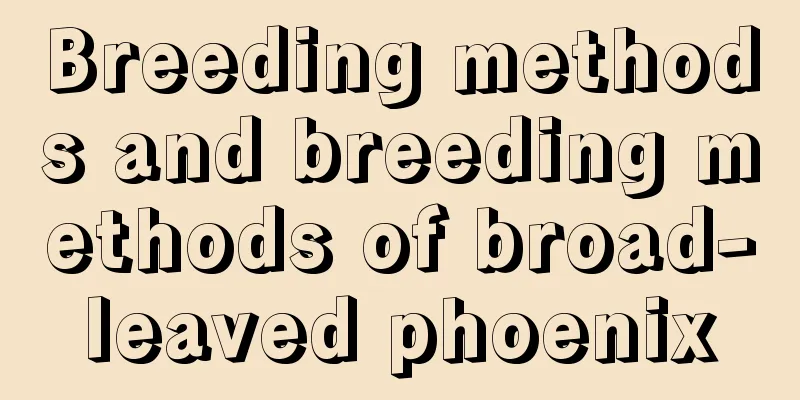Breeding methods and breeding methods of broad-leaved phoenix

1. Maintenance methods1. Soil: Broad-leaved Phoenix is suitable for growing in loose, breathable, nutrient-rich sandy soil. The soil for growing it needs to have good drainage. If conditions permit, you can buy nutrient soil for planting. 2. Light: It needs sufficient sunlight to grow. Insufficient light will affect its normal growth, causing growth problems such as excessive growth and leaf wilting. 3. Temperature: Its growth temperature should be controlled between 13 and 19 degrees. In winter, it should be moved indoors and the temperature should be controlled between seven and ten degrees. This will ensure it can safely survive the winter. 4. Water: It is very drought-resistant, so the soil in the pot should be kept moist during the growing season. In summer, you need to spray the plants appropriately to cool them down. In winter, you need to control watering and water them less frequently. 2. Breeding techniques1. Repotting: The broad-leaved phoenix grows almost all year round and has a very high survival rate. When its stems and leaves grow too high, you can pinch off the top to lower the plant shape and promote more branches. Every spring, the plant should be returned to a new pot to ensure the beauty of the plant. 2. Pruning: Newly potted seedlings should be topped off in time to promote branching. Older plants should be cut off to encourage new buds to sprout. 3. Problem Diagnosis1. Diseases: Botrytis cinerea and powdery mildew are both common diseases. They can be sprayed with thiophanate-methyl powder or liquid, or they can be prevented in daily life. 2. Pests: scale insects and aphids. This is also a common pest. First, they should be isolated, and then sprayed with 1,000 times diluted malathion emulsifiable concentrate. This has a better insecticidal effect. IV. Other issues1. Can it be raised at home: It can be raised at home, but be careful not to water it too much or too frequently, as this will cause root rot. Frequent ventilation is required to facilitate plant growth. 2. Whether it can be exposed to rain: This type of plant does not require too much water to grow, so it cannot be exposed to rain. A large amount of rainwater erosion and deposition will destroy the root structure and shorten the growth life of the plant. |
<<: Cultivation methods and precautions of Centella asiatica
>>: Cultivation methods and precautions of Yunnan Polygonatum
Recommend
How to cultivate Hedinglan
Soil selection 1 part of crushed moss + 3 parts o...
What fertilizer is best for Michelia
Michelia fertilization time 1. Michelia can be fe...
How to plant kapok trees? Can seeds be planted?
1. How to plant kapok trees 1. Land preparation a...
How to prune guava
When to prune guava Guava generally bears fruit o...
How to treat the black stems of green radish
1. Raise the temperature 1. Reason: The green ivy...
How to reproduce spider orchid
How to reproduce spider orchid Bulb propagation B...
Notes on changing pots
Notes on changing pots When repotting the plant, ...
Cultivation methods and precautions of Oxalis
1. Adequate sunlight Oxalis itself likes light ve...
Key points of orchard management plan in February
February is the basic month for fruit tree manage...
What fruit nourishes the stomach
1. Papaya The papain contained in papaya helps to...
Time and method of changing soil for Mimosa
Mimosa soil changing time Judging from its growth...
When is the right time to sow cabbage?
Cabbage planting time Cabbage is highly adaptable...
How to propagate Schefflera and what to pay attention to
Schefflera propagation method There are two ways ...
Do cornflowers prefer shade or sun?
Do cornflowers prefer shade or sun? Cornflower is...
Breeding methods and precautions for blue butterflies
The blue butterfly is very easy to grow. It is a ...









